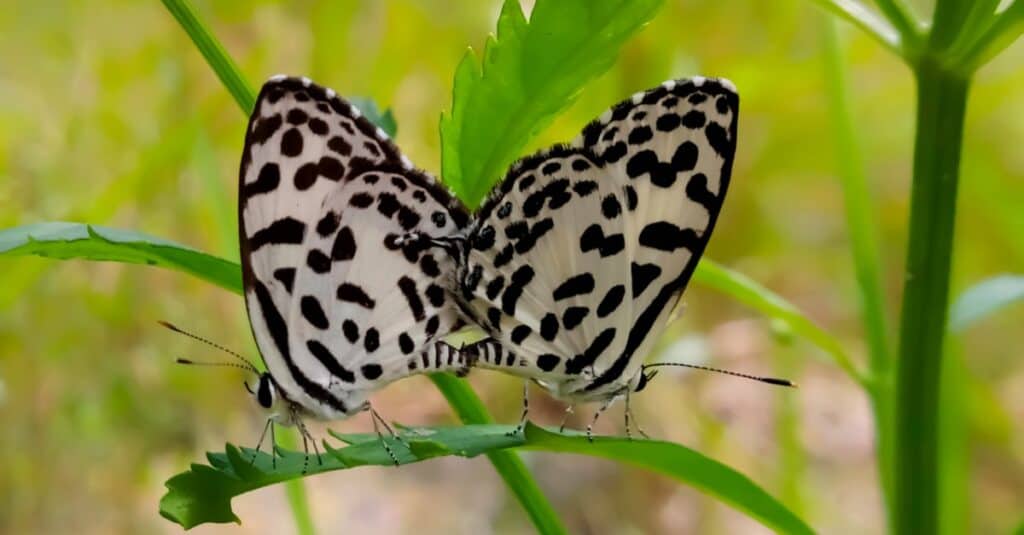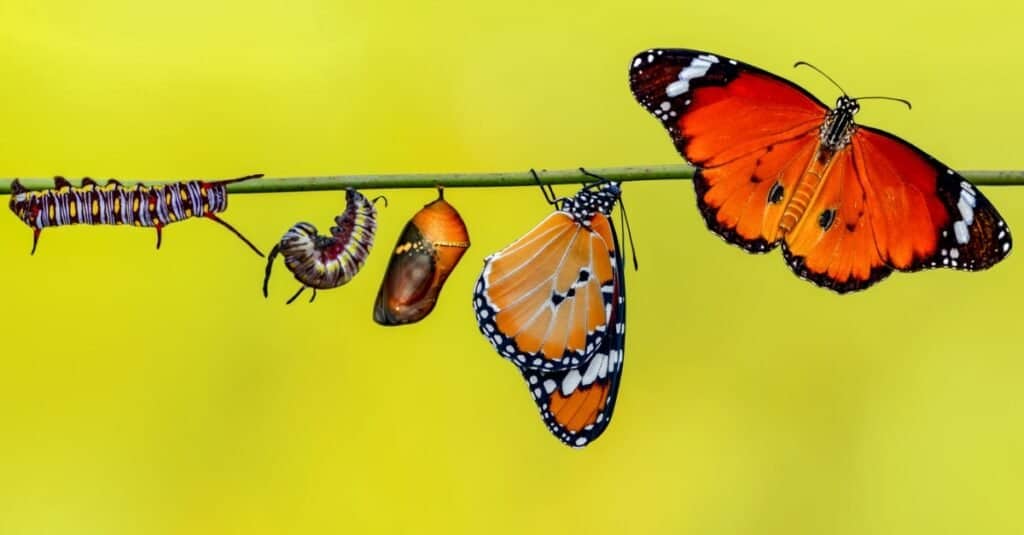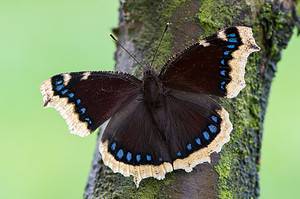Butterflies come in a remarkable variety of different forms and patterns, from the orange-colored majesty of the monarch to the lustrous red and blue patterns of the peacock butterfly, but all of them adhere to the same basic reproduction cycle. They begin life as an egg, hatch into a larva, create a cocoon as a pupa, and finally transform into an adult. This involves a long, difficult process of renewal and transformation, honed throughout many millions of years of evolution. This article will cover some fascinating details about how butterflies reproduce.
Does The Butterfly Reproduce Sexually or Asexually?
The short answer to the question is that all known species of butterflies reproduce sexually most of the time. This is because there are numerous advantages to sexual reproduction. The most important advantage is that it confers enormous genetic variation to the offspring, creating new combinations and varieties that can adapt to new conditions. Individuals with genes best suited to the environment are more likely to survive and reproduce compared to individuals with static genes.
The downside to reproducing sexually, of course, is that both a male and a female are required to be present at the same time. This limits the number of offspring that the parents can have. Asexually reproducing animals, by contrast, can create massive numbers of offspring quickly without expending effort on the mating process. Both the honeybee and stick insect reproduce part of the time in this manner. A few butterfly species can reproduce asexually as well, but it’s never the main means of reproduction because it comes at the cost of genetic variation (the offspring tend to be clones of the mother). Unfortunately, there is a lot we still don’t understand about asexual reproduction in butterflies.
How Does The Butterfly Find a Mate?

©iStock.com/Nadim Mahmud Himu
The butterfly reproduction cycle usually begins in spring or early summer. This is when the butterflies have returned from their long migration or emerged from the winter hibernation period. The colors and patterns of the wings provide an easy way for males to identify female members of their species. When a male has found a suitable mate, he will usually fly above or below the female and release his chemical pheromones to convey his intentions to mate. He will then follow this up with the performance of an aerial mating dance, unique to each species. Males are so eager to impress a potential mate that sometimes swarms of them will gather around a chrysalis before the female has a chance to emerge.
How Do Butterflies Mate with Each Other?
If the female has accepted what the male is offering, she will join him in his elaborate courtship dance. With their relationship now established, they will find a place on the ground or a perch to land and touch their ends together. The male has a specialized clasping organ at the end of his abdomen to keep the female in place. The mating process can last anywhere between a few minutes and a few hours at once. The male will then transfer a substance called spermatophore to the female’s body. It consists of packages of sperm and enough nutrients for the female to fertilize and lay the eggs. These nutrients are so important to the mating process that the male will often spend extra time gathering food to produce higher quality spermatophore.
The female may mate with just one or sometimes multiple partners per season, but the male (who may die a few weeks after mating) has a few different strategies to ensure that his sperm will triumph over those of his male rivals. To prevent the female from mating with anyone else, the male will sometimes spray her with an off-putting scent. Some species also can plug the female’s opening to stop more sperm from entering. However, even after mating is completed, fertilization doesn’t happen immediately. The female can store the sperm inside of a special sac called a bursa until she is ready to give birth.
How Does the Butterfly Lay Its Eggs?
The egg-laying process can occur at any point between the spring and fall, depending on the exact species. The female butterfly chooses exactly where to lay her eggs, but not just any plant will do. Caterpillars are specialized for specific species or groups of plants, which will provide both a home and a source of food for the first stage of their life. For example, the caterpillar stage of the monarch butterfly is specialized for a flowering plant called milkweed.
To find the right plant, the female pays very close attention to the color, shape, and even the odor of the leaf. She must also pay attention to the correct environmental conditions: too little moisture and humidity can result in the eggs drying out, but too much can cause the eggs to rot or develop fungus. This can cause her to be very picky about her choice of location.
When she is certain about the right plant, the female will begin to fertilize the eggs with the sperm she has stored in her bursa, generally using the last of the sperm first. She will then deposit the eggs, either individually or in clusters, directly on the leaf. A single cluster may contain hundreds or even thousands of eggs at a time. The mother then attaches the eggs to the leaf with a thin coating of wax and lets them develop on their own. Although the mother has no other association with the offspring past this point, the eggs are protected from threats by a hard outer layer called the chorion.
What are the Typical Life Stages of a Butterfly?

©iStock.com/Darkdiamond67
Once the young butterflies hatch from their eggs, they will enter the larval stage, also known as the caterpillar. This herbivorous insect has a long, segmented body with multiple pairs of legs, short antennae, 10 to 14 relatively basic eyes (which only see light and dark), and powerful mandibles to chew through plants. The sole purpose of the caterpillar is to eat and grow as much as possible, sometimes reaching up to 10 times its initial size.
For instance, the monarch butterfly will grow from the size of a pinhead to nearly two inches long in a mere two weeks after hatching. To grow progressively larger, the caterpillar will shed its outer layer about four or five times in a row. Each separate larval molt is known as an instar; it’s kind of like an individual stage inside of the main larval stage. Since this entire process can easily take months or years, the caterpillar will sometimes enter a state of prolonged hibernation to survive the harsh winter.
Once the caterpillar has reached its full size, it will transform into a pupa (also known as chrysalis), in which it’s suspended from a branch or hidden from sight in or on the ground, protected by a silk cocoon. This stage can last anywhere between a few weeks and two years at a time. As the butterfly transforms, specialized cells in the larva will become the legs, wings, and eyes of the adult. When it finally emerges from the cocoon, it will be a full adult butterfly, ready to mate in the spring and begin the entire reproduction cycle over again. The typical lifespan of an adult is no more than a few weeks or months long. Both parents usually die a short time after mating.
Next Up:
- How Long Can A Snake Go Without Eating?
- 10 Incredible Butterfly Facts. If you love butterflies as much as we do you will enjoy these fun facts.
- Moth vs Butterfly: The 8 Key Differences. What is the difference between a butterfly and a moth? This article will give you all of the details.
Thank you for reading! Have some feedback for us? Contact the AZ Animals editorial team.








